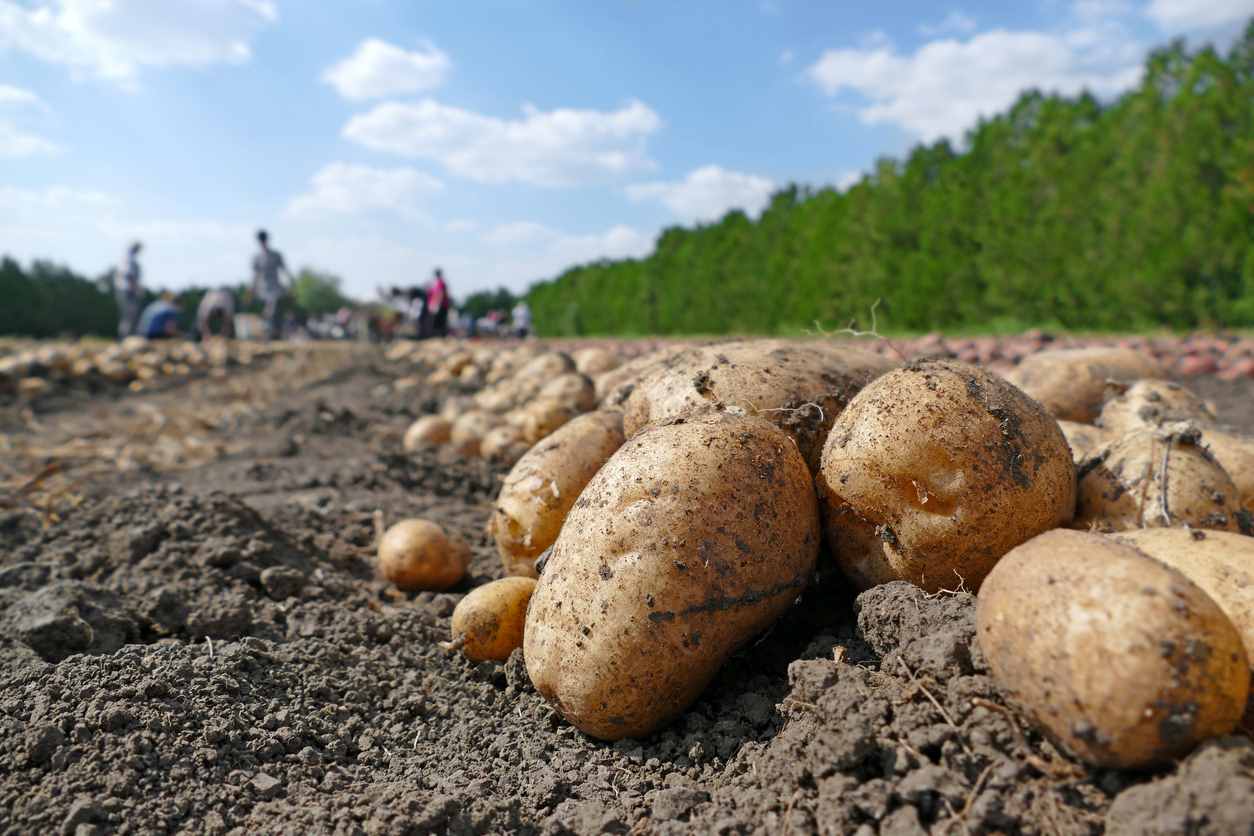
Potato
The potato is a perennial herbaceous plant which comes in more than 3,000 varieties. The latter are differentiated by their growth time, namely early, early, semi-early to semi-late and late, as well as by the quality of their flesh, which can be firm, soft or floury, their yield , their starch content, their taste, their size, their color, etc.
It will therefore be necessary to choose the variety that best suits you in terms of growing time, cooking method, flavor, etc. The choice being difficult, it may be wise to plant several varieties, especially that the potato is an easy tuber to grow as long as its needs are respected:
- she needs darkness to grow without turning green;
- she needs nutrients and, above all, nitrogen and potassium;
- she needs water, especially at start-up, and fears drought;
- it must be planted in soil with a temperature of at least 10°C. It is therefore important to wait until the frosts are over to plant your potatoes.
Hilling up potatoes
Many ways of growing potatoes have developed over time, but the first, historically speaking, is the most widely known and used. It is cultivation under mound. This involves making trenches in which the potato tubers are placed, then covered with earth.
As soon as the plants reach around twenty centimeters in height, it is then necessary to carry out regular hilling, i.e. bring soil all around the foot so as to create a mound and leave only about ten centimeters of the stem in the open air. For hilling, you can use a hoe, being careful not to damage the plants.
If you hill your potatoes, you will be aware that it requires a lot of handling and time since the hilling must be repeated again and again! So why not turn to alternative growing methods and opt for growing your potatoes underground, but without hilling, or growing your potatoes without burying them?
Alternative cultivation methods
Choose the right location
Whatever cultivation method you choose and if you are planting potatoes for the first time, you must start by choose the ideal location knowing that the best exposure for this root vegetable is partial shade. In fact, your plants will be preserved during hot summer days while benefiting from sufficient sunlight to be able to develop.
In all cases, avoid locations that are too shaded and too humid where they risk developing diseases. In a second time, mark the location allocated to growing your potatoes.
Cultivation under mulch simple version
If you are looking to save as much time as possible, you can opt for this method. In addition to being very simple to implement, it provides good performance and is accessible to everyone as it is a solution that requires no physical effort. Here’s how to do it:
- Place your sprouted potatoes directly on the ground, making sure to space them about fifteen centimeters apart from each other.
- If you have compost, you can add it on top of your potatoes. This allows you to reduce the risk of frost and nourish your soil.
- Cover everything with straw to a thickness of approximately 25 cm.
- Finally, carry out a very generous first watering.
- Then all you have to do is wait until your plants are ready to be harvested.
- To harvest your potatoes, simply lift the straw. The earth below will be soft and airy.
This method of cultivation is also a good solution for expanding your vegetable garden without having to dig.
Cultivation under mulch
What differentiates this solution from the previous one, the simple version of mulch, is preliminary work of the land. This means that you will proceed as explained above, but with an additional step which aims to aerate the soil using a grelinette or a garden fork, without turning it over.
To do this, you must plant the tool in the ground and simply move it back and forth with the handle. The advantage of not turning the soil is that you do not disturb underground life or soil layers. Once this is done, you can place your potato tubers on the ground and follow the steps described previously.
Cultivation in turf
From February, you can, if you wish, aerate the soil as we have just explained to you. Then, once the time comes, all you have to do is follow the following steps:
- Place your potatoes on the ground.
- Cover them with grass.
- As temperatures rise and the ground warms, start adding layers as you collect material until you have a mat about twenty centimeters thick. It can be straw, poultry manure, mowed grass, etc. These successive layers will prevent the evaporation of water from the soil, protect the tubers from the sun’s rays and prevent them from turning green.
- Little by little, the root system will develop and the aerial part will also grow.
Culture in lasagna
Substantially similar to growing in grass, growing in lasagna differs in that it is necessary add a layer of different organic matter every 15 days. This has the effect of transforming the earth into a sort of compost from which you will extract the potatoes at harvest time.

